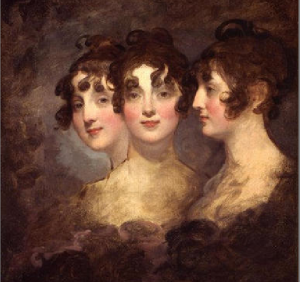The Baltimore Bonaparte
It was a dress so small that it “would fit easily into a gentleman’s pocket.” Elizabeth Patterson (1785-1879) was one of the daring young women who imported France’s scandalous Grecian-inspired (Empire) dresses to the United States in the early 19th century. The Baltimore belle, who was known for her fashionable bravado, wore this sheer-ish muslin number as her wedding dress in 1804. (It’s now part of the collection at the Metropolitan Museum’s Costume Institute.)
Hers was no ordinary wedding. The groom was Jerome Bonaparte, Napoleon‘s younger brother, though the Emperor was certainly not among the guests during the proceedings in Baltimore. Elizabeth was 18. Jerome was 20. Napoleon was furious, and did all he could to declare their marriage void, going so far as to threaten Jerome with imprisonment. Elizabeth’s brother rushed to France, hoping to negotiate with the leader. James Madison got involved. Talleyrand got involved.
In 1805 the young couple set sail for Europe themselves, hoping to win Napoleon over, landing first in Lisbon, where Elizabeth was not permitted ashore. Jerome went on to Alessandria to see his brother. Elizabeth sailed to Amsterdam, where she was refused entry again. Jerome wrote to her, “My good wife, have faith in your husband. The worst that could happen now would be for us to have to live quietly in some foreing country….My dearest Elisa, I will do everything that must be done.” While Pope Pius VII refused to annul the marriage, Napoleon was not swayed. Finally, he told Jerome that he would strip him of all rank and titles, and leave him to face his staggering debts alone if he did not annul the marriage.
Elizabeth finally disembarked in England, where her son, Jerome Napoleon Bonaparte, was born. She went back to Baltimore having never seen her husband again. Jerome senior was named a prince of the empire, and a general. And was made successor to the imperial throne. In 1807, he was made king of Westphalia and married a princess of Wurttemberg.



Comments